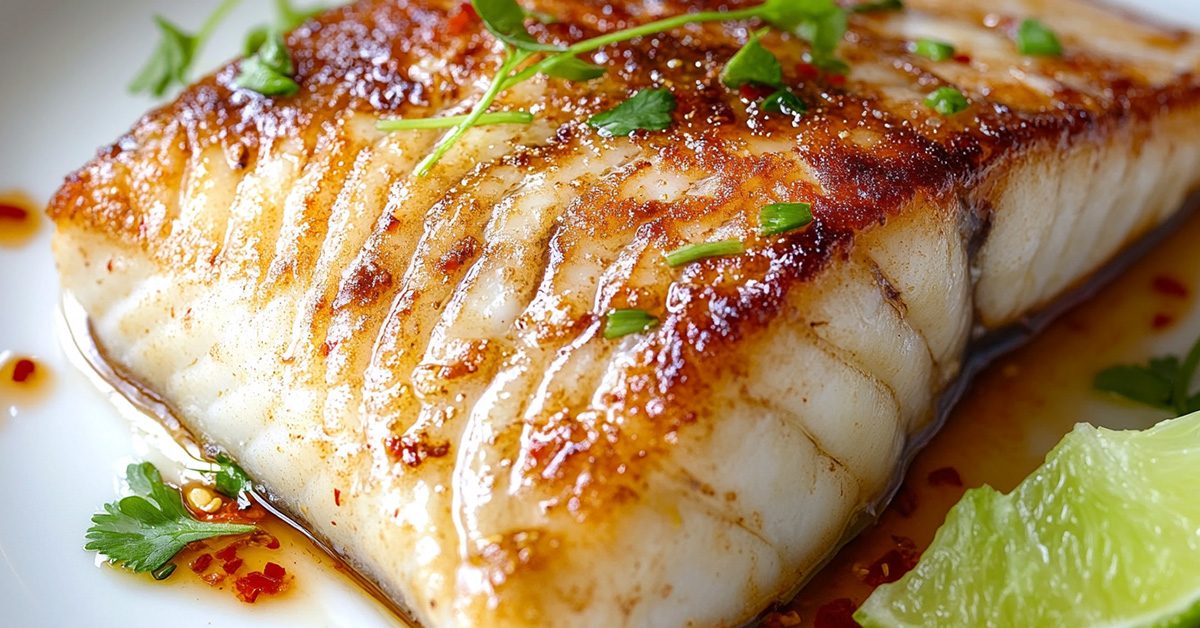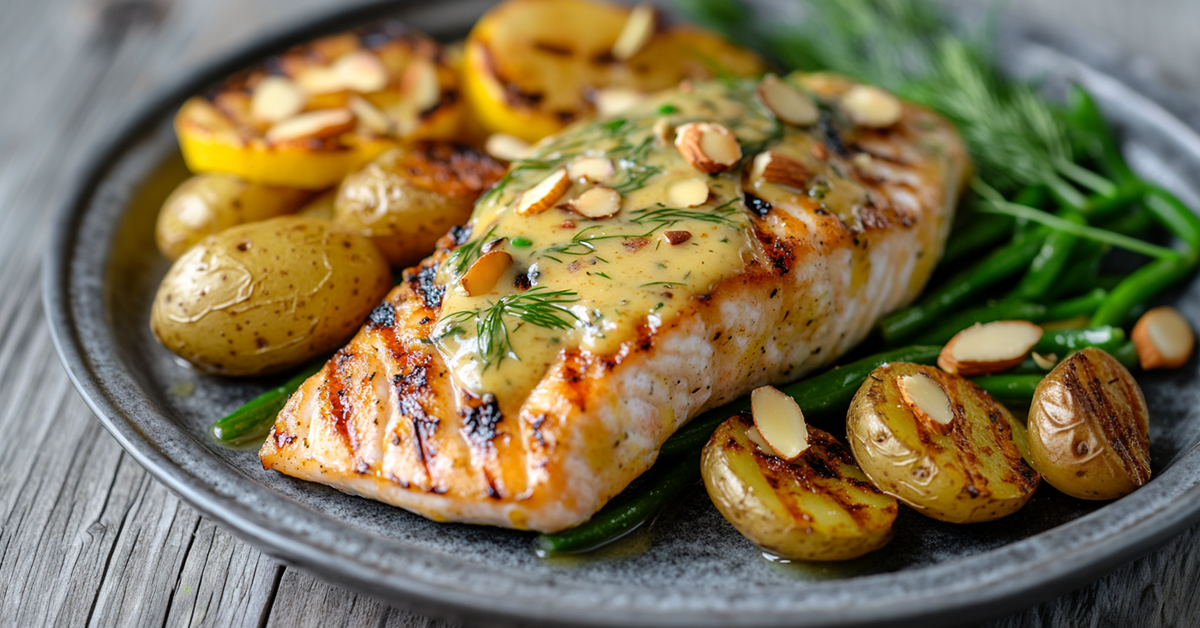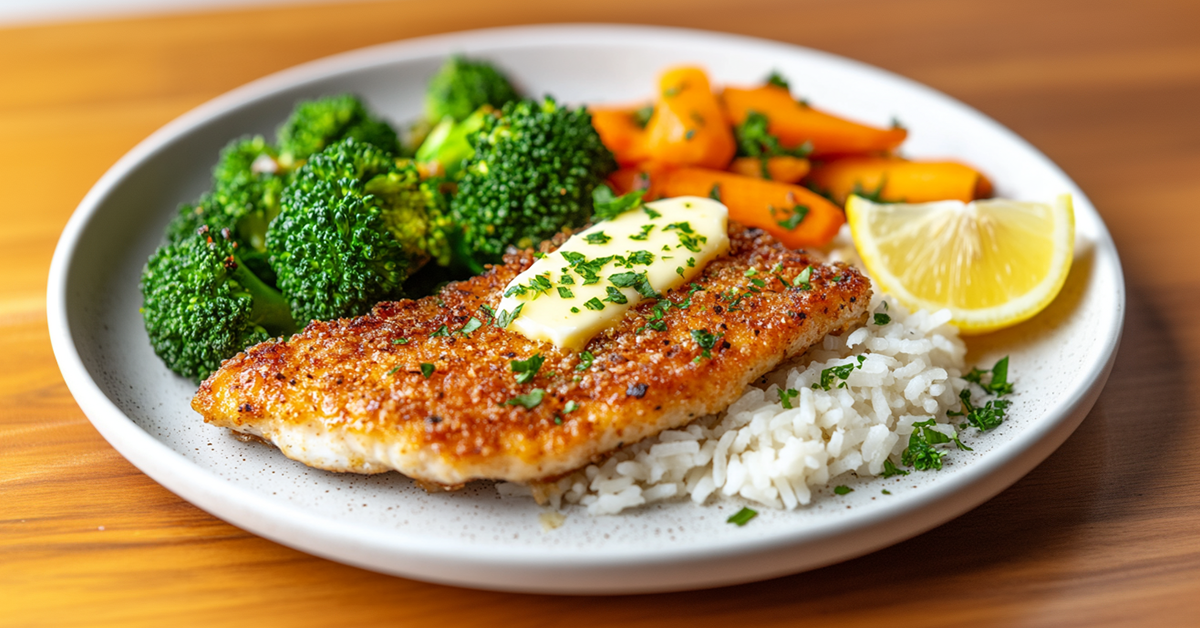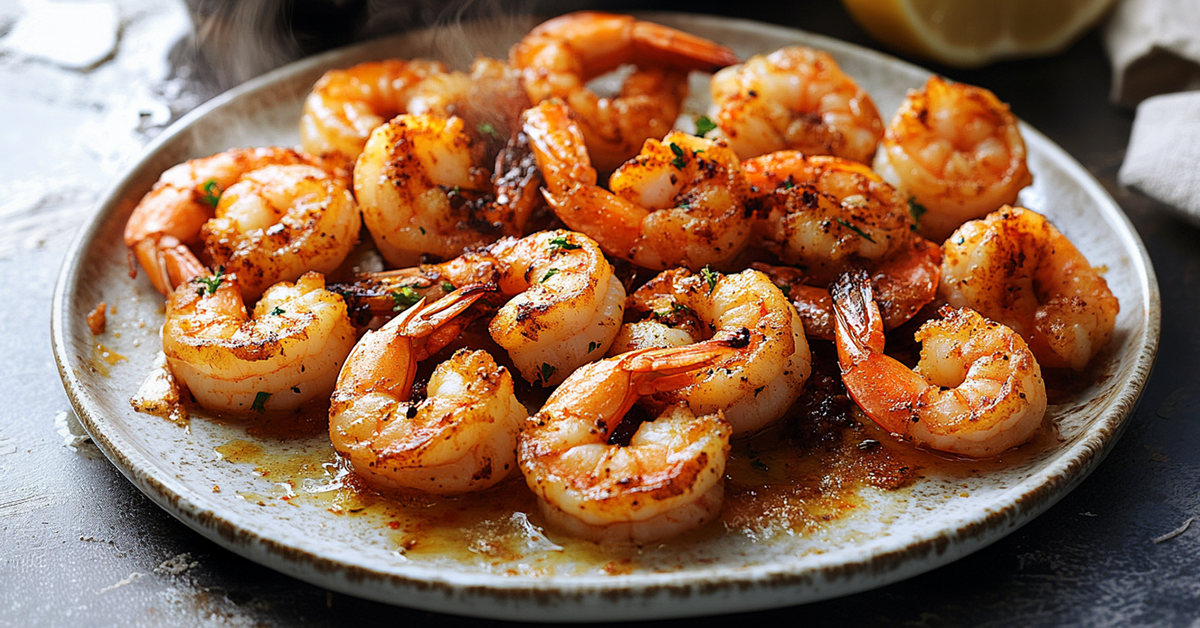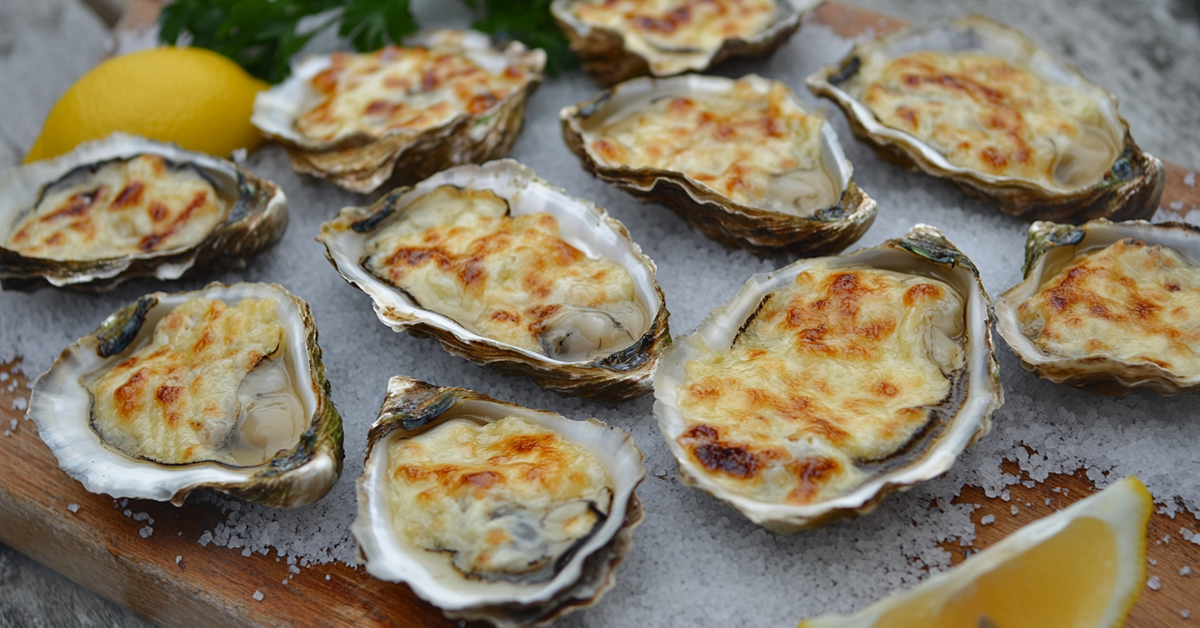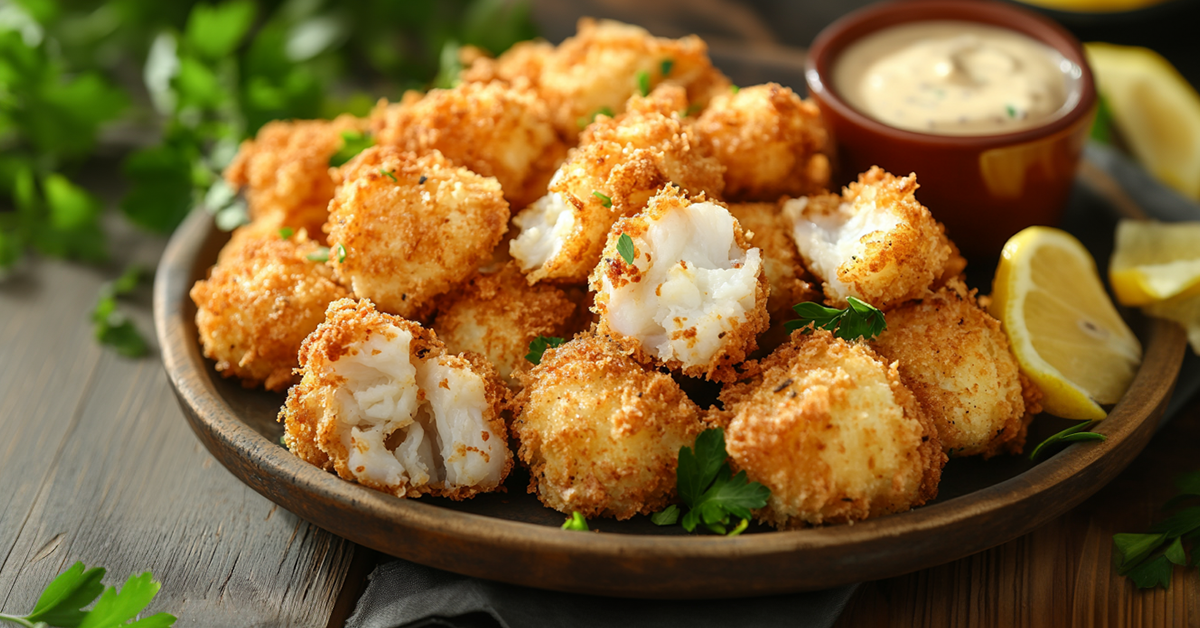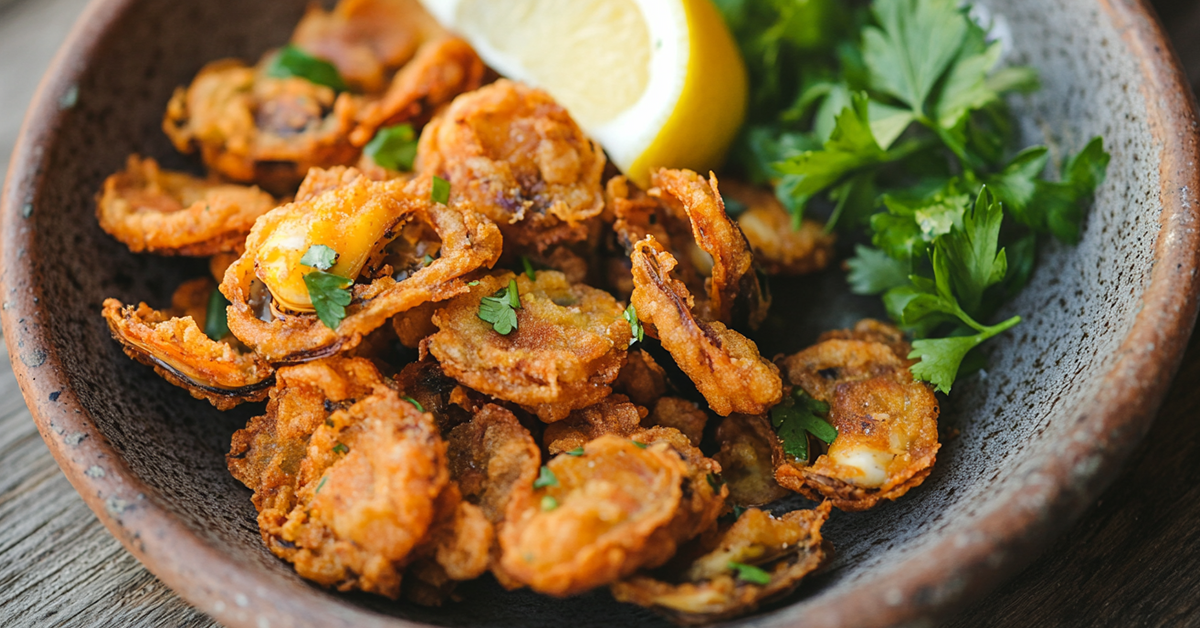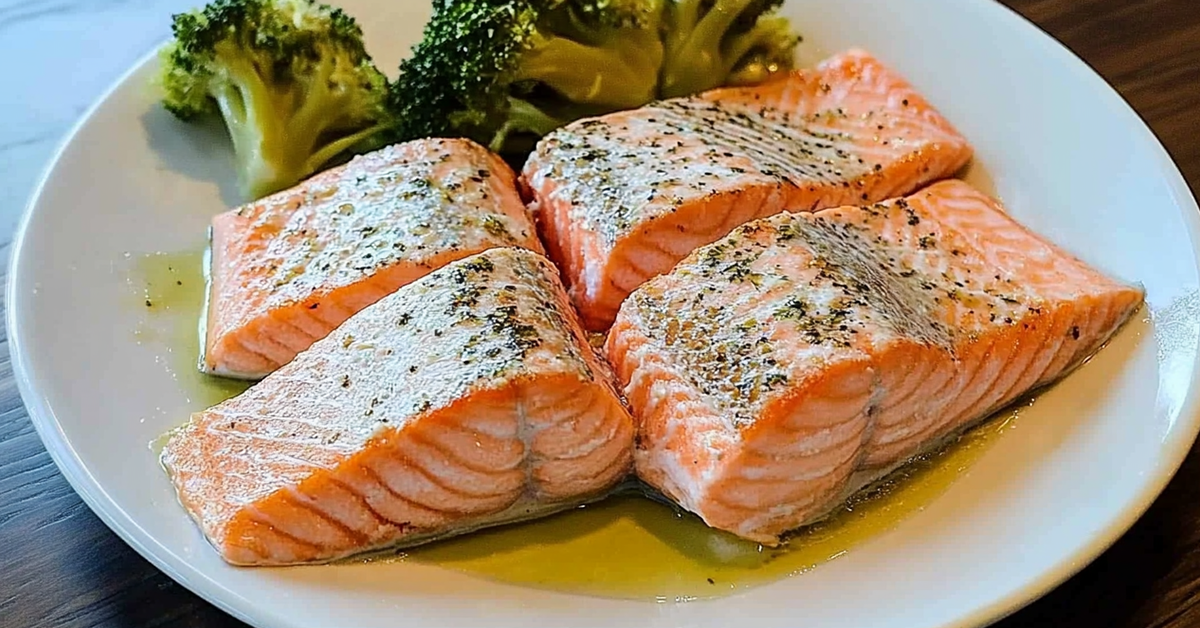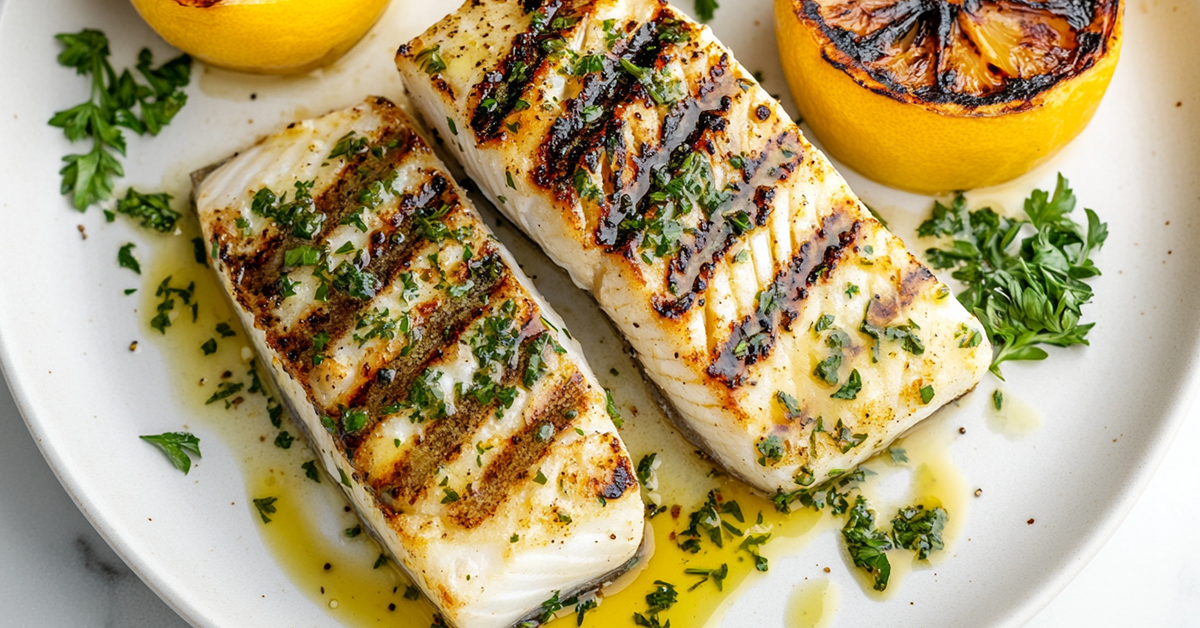Cooking fish perfectly at home can feel like an impossible challenge. Your sea bass often turns out dry and overcooked or remains undercooked in the middle. This creates a frustrating experience when you want that restaurant-quality result.
Sous vide cooking transforms your sea bass preparation completely. This temperature-controlled method will give a perfectly cooked fish every time, while herbs and citrus enhance the flavors deeply. Professional chefs rely on sous vide cooking that delivers consistent excellence, and you can easily replicate this technique in your kitchen. This piece walks you through temperatures, timing, and essential tips to help you create a memorable dish, whether you’re starting with sous vide sea bass or refining your technique.
Table of Contents
What is Sous Vide Cooking?
Sous vide cooking has evolved from professional kitchens into our homes. This technique delivers precision that regular cooking methods can’t match. The term “sous vide” (pronounced “soo-veed”) means “under vacuum” in French – but don’t let that fancy name scare you away.
The concept is simple: seal your food in a plastic bag and cook it in a temperature-controlled water bath. Your sea bass gets a perfectly heated spa treatment! The real magic happens through precise temperature control, so your food won’t overcook even if you leave it longer than planned.
You’ll need these items to start sous vide cooking:
- An immersion circulator (the device that heats and circulates the water)
- Food-grade plastic bags or a vacuum sealer
- A large pot or container for water
- A timer (though most circulators have one built-in)
Sous vide’s strength lies in its foolproof precision. Traditional cooking uses high, direct heat that can turn your fish from perfect to overcooked within seconds. The sous vide method lets you set your desired temperature, and that’s exactly what you’ll get – every time.
The method surrounds your food with water at the exact temperature you want. A skilled chef watches your food every second to maintain perfect temperature throughout cooking. This gentle, precise approach works great especially when you have delicate proteins like sea bass, where slight temperature changes can affect the outcome.
What makes sous vide different from regular cooking is its consistency. You won’t need to watch visual cues or poke your fish. Instead, exact temperatures help achieve your desired results, whether it’s a tender, flaky sea bass or any other protein you’re cooking.
Read also: How to perfectly cook fish on a traeger grill
Why Choose Sea Bass Sous Vide?
Precise sous vide cooking is a game-changer to prepare delicate fish in your kitchen. Sea bass cooked sous vide provides unique advantages that traditional methods simply can’t match.
Perfect texture every time stands out as the main reason to choose sous vide for sea bass. The gentle, precise cooking will give your fish an incredibly moist and tender result. Traditional methods like pan-frying or baking need constant monitoring, but sous vide gives you a generous window of perfection.
Here’s why you’ll love cooking sea bass sous vide:
- Your fish maintains its natural moisture and oils
- The flesh stays tender without becoming mushy
- You can infuse flavors more deeply during cooking
- There’s no risk of overcooking
- You get restaurant-quality results consistently
- The process is largely hands-off
- You can prepare multiple portions with equal quality
The beauty of temperature control lets you achieve that silky, butter-soft texture that’s hard to nail with traditional cooking methods. Your sea bass will be perfectly cooked from edge to edge, without dry spots or raw centers.
Sous vide is special for sea bass because it preserves the fish’s delicate flavor while letting you add subtle infusions. Herbs, citrus, and butter sealed in the bag with your fish allow these flavors to gently pervade the flesh during cooking. This creates layers of taste that are both subtle and sophisticated.
Timing flexibility adds another fantastic advantage. Traditional cooking methods give you a narrow window of maybe 30 seconds between perfectly done and overcooked. Sous vide keeps your sea bass at the ideal temperature without overcooking. You can focus on preparing sides or entertaining guests without clock-watching.
Home cooks who want to raise their seafood game will find sous vide sea bass the perfect blend of foolproof technique and gourmet results. You’ll get consistent, restaurant-quality fish every time, whether you’re cooking for a quiet dinner at home or hosting a dinner party.
Read also: Sous Vide Shrimp Recipe
Tips for Preparing Sea Bass for Sous Vide
The right preparation will make all the difference in your sous vide sea bass adventure. Let me walk you through everything you need to get your fish ready for its temperature-controlled bath.
Quality sea bass filets should feel firm and have a clean, ocean-like smell. Frozen fish needs to thaw in your refrigerator overnight – room temperature thawing is not an option.
Here’s what you need to do to get your sea bass ready for sous vide cooking:
- Check and remove remaining scales
- Pat filets dry with paper towels
- Cut into equal-sized pieces
- Take out pin bones with clean tweezers
- Add seasoning right before bagging
- Make light scores on skin-on filets
Seasoning Tips: The natural flavors of sea bass shine with just salt and pepper. Once you’re comfortable with the technique, add fresh herbs like thyme or tarragon, and maybe even a thin slice of lemon or lime.
Air removal is a vital part of bagging your sea bass. The gentle setting on your vacuum sealer will protect the delicate flesh. Water pressure naturally pushes out air with the zip-lock method – just lower your bag slowly while keeping the seal above water.
Pro Tip: Double-bagging the fish will give a better result, especially with liquid seasonings or marinades. The extra layer keeps water from seeping in while cooking.
Your seasoned sea bass should lie in a single layer inside the bag. Uneven cooking happens with overlapped pieces. Each portion needs its own bag rather than cramming multiple pieces together – this helps with portion control and even cooking.
The fish’s delicate flesh requires gentle handling throughout preparation. Rough treatment can ruin its texture or break it apart. Your attention to detail will result in perfectly cooked, restaurant-quality sea bass.
Read also: Fried Fish and Rice Recipe
Choosing the Best Temperature for Sous Vide Sea Bass
The secret to perfect sous vide sea bass lies in getting the temperature exactly right. The difference between butter-soft, flaky fish and a disappointing dinner comes down to precise temperature control.
Most home cooks find 130°F (54.4°C) to be ideal for sea bass. This temperature creates that silky, tender texture while ensuring the fish cooks completely. You could say it’s the Goldilocks zone – not too raw, not too firm, but just right.
Your temperature choice affects both texture and doneness:
- 125°F (51.7°C) – Very soft, translucent center
- 130°F (54.4°C) – Tender, moist, slightly flaky
- 135°F (57.2°C) – Firmer, more traditionally cooked
- 140°F (60°C) – Well-done, but still moist
The timing plays a crucial role. Your water bath should reach the target temperature before you start the clock:
| Filet Thickness | Cooking Time |
|---|---|
| ½ inch (13mm) | 30-45 minutes |
| 1 inch (25mm) | 45-60 minutes |
| 1½ inch (38mm) | 60-75 minutes |
Sous vide cooking offers a unique advantage: you get a generous window of perfection. The sea bass won’t overcook even if it stays in for an extra 30 minutes beyond these times. This makes it perfect for entertaining since your fish stays ideal while you focus on other dishes or your guests.
If you’re new to sous vide cooking, start with a 1-inch thick filet at 130°F for 45 minutes. This combination delivers consistently excellent results and helps you understand the process. You can experiment with different temperatures to find your ideal texture as you gain confidence.
Note that these temperatures work best with fresh or properly thawed sea bass. Cooking from frozen? Add 15-20 minutes to your cooking time but keep the temperature unchanged. The precision of sous vide ensures great results, though you’ll need extra time for thawing.
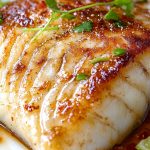
Sea Bass Sous Vide with Herbs and Citrus
- Total Time: 1 hour
- Yield: 3 servings 1x
Description
Make your kitchen feel like a gourmet restaurant with this elegant sous vide sea bass recipe. Quality ingredients and the right temperature control will help you create a dish that belongs in a fine dining establishment.
This recipe pairs tender sea bass with a tasty miso-butter paste. The sous vide method produces incredibly moist fish with crispy skin that will impress your guests.
Ingredients
- 12–16 ounces sea bass filets (3–4 pieces), skin-on.
- 3 tablespoons unsalted butter, softened.
- 2 tablespoons white miso paste.
- 1 garlic clove, thinly sliced.
- 1 teaspoon sambal.
- Salt to taste.
Instructions
- Set your sous vide water bath to 110°F (43.3°C).
- Mix softened butter, miso paste, sliced garlic, and sambal in a bowl until combined.
- Pat the sea bass filets dry and place them in a single layer.
- Coat the filets generously with the miso-butter mixture.
- Vacuum seal the fish and remove all air.
- Place the sealed bag in the water bath and cook for 45 minutes.
- Take the fish out and save the cooking liquid.
- Heat a skillet over medium-high heat.
- Add a tablespoon of the reserved liquid to the pan.
- Sear the fish skin-side down for 60 seconds to crisp.
- Add remaining cooking liquid before serving.
Notes
– Your filets should have similar thickness to cook evenly.
– Thicker filets need 15 extra minutes of cooking time.
– Make sure the bag stays submerged – if it floats, remove air and reseal.
– Sear only the skin side – no need to flip the fish.
- Prep Time: 15 minutes
- Cook Time: 45 minutes
- Category: Seafood
- Method: Sous Vide
Benefits of Cooking Sea Bass Sous Vide
Finding the benefits of sous vide cooking for sea bass shows you cooking possibilities that regular methods just can’t match. Let me show you why this technique should be part of your kitchen toolkit.
Stress-free entertaining becomes reality with sous vide sea bass. The extended serving window means your fish stays perfectly cooked up to an hour after reaching temperature. You’ll have time to focus on other dishes or your guests.
Here’s what makes sous vide sea bass special:
- Even cooking throughout – no more dry edges and raw centers
- Better natural flavors – the sealed environment locks in the fish’s delicate taste
- Better nutrient retention – gentle cooking keeps vitamins and minerals
- Consistent results – no more guesswork in cooking
- Minimal cleanup – one bag, one pot, that’s it
The sealed cooking environment gives you a chance to infuse flavors. Adding herbs, citrus, or butter to your sous vide bag doesn’t just season the surface – these ingredients blend with the fish and create deeper taste profiles.
Weeknight dinners become easier with sous vide sea bass. The fish cooks while you prepare sides, help with homework, or handle other tasks. This precise cooking method means no hovering over the stove or checking doneness.
Portion control comes naturally when you cook sous vide. Individual portions in separate bags can be seasoned and cooked at the same temperature. This helps especially when you have guests who want different seasonings or when you’re meal prepping.
Your sea bass keeps its natural moisture and texture with this gentle cooking process. Unlike pan-frying or baking where juices escape, sous vide keeps all those flavorful juices in your fish. You’ll get moist, tender sea bass every time you cook.
Health-conscious cooks will love that sous vide sea bass needs minimal added fats. While butter or oil can boost flavor, the precise temperature control means you don’t need extra fat to prevent sticking or drying out.
You may like: Air Fryer Chilean Sea Bass
Serving Ideas for Sea Bass Sous Vide
You’ve become skilled at cooking sous vide sea bass, so let’s look at creative ways to present your perfectly cooked fish. A thoughtful presentation will transform your expertly prepared sea bass into a stunning restaurant-worthy dish.
Plating your sea bass begins with a warm plate – this basic step will give you the ideal serving temperature. The fish should rest skin-side up to highlight that beautifully crisped exterior from the final sear. A gentle twist of the filet builds height and visual interest on the plate.
Your sous vide sea bass works perfectly with these complementary sides:
- Citrus-scented quinoa or wild rice
- Roasted rainbow carrots with honey glaze
- Sautéed asparagus with garlic
- Fennel and orange salad
- Wilted baby spinach with pine nuts
- Herb-roasted fingerling potatoes
Sauce selections should be light and bright to enhance your perfectly cooked fish. A classic lemon butter sauce highlights the sea bass’s natural flavors, and a light herb-infused olive oil adds subtle complexity. A ginger-scallion sauce or ponzu reduction offers an Asian twist.
Temperature timing is a vital part of the perfect plate. Your sides should hit the pan while the fish gets its final sear. This approach ensures each component reaches the table at the right temperature. Note that your sous vide sea bass stays warm for several minutes after plating, which gives you time to add final touches.
Visual appeal comes from varying height and texture on your plate. Your sea bass can rest over a bed of vegetables, or components can be arranged in odd numbers – a chef’s favorite trick that catches the eye. Micro-greens or edible flowers add professional flair and vibrant color.
Family-style serving works well with sea bass on a warmed platter surrounded by roasted vegetables. This relaxed yet sophisticated approach makes serving simple while keeping the dish’s visual appeal. Fresh herbs and lemon wedges around the platter serve both practical and decorative purposes.
Garnish choices do more than decorate – they add complementary flavors. Fresh herbs like dill or chervil, toasted sesame seeds, or a light dusting of smoked paprika will lift both the appearance and taste of your dish.
Health Benefits of Sea Bass
Sea bass makes a great addition to your meals and provides powerful health benefits, especially when you have the gentle sous vide cooking method. This prized fish packs an impressive nutritional profile that health-conscious food lovers will appreciate.
Rich in lean protein, sea bass gives your body the building blocks it needs to maintain and repair muscles. Sous vide preparation stands out because it preserves these valuable proteins without extra fats or oils.
Sea bass contains these key nutrients that benefit your body:
- High-quality omega-3 fatty acids for heart and brain health
- Essential minerals including selenium and potassium
- Vitamin D for bone strength and immune function
- Vitamin B12 for energy and nerve function
- Low-calorie protein source for weight management
Sous vide’s gentle cooking method preserves these vital nutrients better than high-heat techniques. You’re not just enjoying a delicious meal when you cook sea bass sous vide – you’re getting maximum nutritional benefits.
Supporting heart health stands out among sea bass’s qualities. Its omega-3 fatty acids and lean protein work together to maintain healthy cholesterol levels. Sous vide cooking’s precise temperature control helps preserve these beneficial fats instead of breaking them down with excess heat.
Sea bass’s selenium content strengthens your immune system, while its high-quality protein helps muscles recover after exercise. The fish’s natural vitamin D content – a nutrient many people lack – builds strong bones and enhances immune function.
Sous vide sea bass gives you a satisfying meal option that keeps calories in check without sacrificing flavor. You won’t need extra fats to achieve delicious results because the cooking method keeps the fish moist. This helps you stick to health goals while enjoying restaurant-quality meals at home.
Sea bass protein proves valuable because your body can digest it easily, and it contains all essential amino acids. Sous vide preparation keeps this protein intact and available to your body, which supports muscle maintenance and immune function.
Reference:
– Verywellfit
Note that gentle cooking best preserves sea bass’s nutritional benefits – another reason sous vide works so well. The controlled temperature helps you get the most nutrients while ensuring perfectly cooked fish every time.
Nutrition Facts for Sous Vide Sea Bass
The nutritional profile of sous vide sea bass can help you plan your meals better. Let’s explore what each perfectly cooked portion brings to your table.
A standard 6-ounce (170g) serving of sous vide sea bass provides these nutrients:
| Nutrient | Amount | % Daily Value |
|---|---|---|
| Calories | 180 | – |
| Protein | 35g | 70% |
| Total Fat | 4g | 5% |
| Saturated Fat | 1g | 5% |
| Cholesterol | 80mg | 27% |
| Sodium | 95mg | 4% |
| Potassium | 450mg | 13% |
Sous vide cooking preserves nutrients effectively. Each bite contributes to your daily nutritional goals, and you’ll get plenty of protein while keeping fat content low.
Your sous vide sea bass packs these essential micronutrients:
- Vitamin B12: 2.5mcg (104% DV)
- Vitamin D: 400IU (100% DV)
- Selenium: 55mcg (79% DV)
- Magnesium: 45mg (11% DV)
- Iron: 1.2mg (7% DV)
Portion Control Benefits: Sous vide cooking ensures consistent portion sizes that make nutritional tracking simple. Each 180-calorie serving makes an excellent choice if you’re watching calories while seeking quality protein.
Sous vide preparation needs less added fat than traditional cooking methods. Your fish maintains its natural nutritional profile without extra calories from oils or butter – unless you want to add them for taste.
Smart Meal Planning: This protein-rich fish fits perfectly into a balanced diet. You’ll feel satisfied thanks to its high protein content, and its moderate fat levels support nutrient absorption without maxing out your daily fat intake.
The values shown here reflect the fish alone. Any marinades, seasonings, or sauces will change your dish’s final nutritional content. Sous vide cooking lets you enhance flavors minimally while keeping your meal nutritious and tasty.
Reference:
– Eat This Much
Common Mistakes to Avoid When Cooking Sea Bass Sous Vide
Even skilled cooks hit snags when becoming skilled at sous vide sea bass. Let’s look at common pitfalls and ways to avoid them to get perfect results every time.
Temperature fluctuations can ruin your sous vide cooking. Your water bath needs to stabilize at the target temperature before adding fish. This step deserves patience – wait for your circulator to show steady readings. A covered water container helps maintain consistent temperature while cooking.
These mistakes need your attention:
- Overcrowding your water bath with too many bags
- Forgetting to remove air pockets from the cooking bags
- Seasoning too far in advance (this draws out moisture)
- Not patting the fish dry before the final sear
- Skipping the resting period after cooking
Your bagging technique makes a bigger difference than you’d expect. The water displacement method works best when you submerge the bag slowly with the seal above water. A rushed job lets water seep into your bag – something you don’t want for perfectly cooked sea bass.
Temperature selection errors can disappoint you with subpar results. The urge to cook at higher temperatures for safety might be strong, but temperatures above 140°F will dry out your fish. The recommended temperature range we discussed earlier gives you the best texture.
Many home cooks struggle with the final sear. Your pan should be screaming hot, but your fish needs to be completely dry. Surface moisture creates steam instead of a sear, and you’ll miss out on that crispy skin. Paper towels help get your fish really dry before searing.
Timing troubles can catch you off guard. Sous vide gives you flexibility, but leaving sea bass in the bath too long (over 2 hours) affects its texture. A timer helps you track cooking time and plan your sides. You have about an hour of wiggle room after minimum cooking time, but that’s your limit.
The seasoning trap catches many cooks – more seasoning isn’t always better. Sea bass has subtle flavors that strong seasonings can overpower. A light hand with seasonings works best. You can add more after cooking, but removing excess seasoning isn’t possible. This matters most with bold flavors like garlic or ginger.
FAQs About Sous Vide Sea Bass
These practical answers will help you master your sous vide sea bass cooking technique. Here are the most common questions that pop up off the top of my head.
Can I cook frozen sea bass directly in the sous vide? Yes, you can cook your sea bass straight from frozen. Just add 30 minutes to your regular cooking time to let it thaw. The sous vide method ensures you’ll still get that perfect texture, just with a longer cook time.
How long can I keep the cooked sea bass? Your sous vide sea bass stays fresh in the refrigerator for up to 3 days in an airtight container. You’ll get the best results by chilling it quickly after cooking if you’re not serving it right away.
What’s the best way to reheat leftover sous vide sea bass? The quickest way is to use your sous vide at 120°F (49°C) for 15-20 minutes. This gentle warming keeps the texture intact. You can also try these methods:
- Microwave in 30-second bursts at 50% power
- Steam for 2-3 minutes
- Pan-sear briefly on each side
Can I sous vide multiple portions at once? Yes! Here’s a quick guide to help you:
| Number of Filets | Water Bath Size |
|---|---|
| 2-4 filets | 12-quart container |
| 4-6 filets | 18-quart container |
| 6+ filets | Multiple containers |
What if my bag floats during cooking? A floating bag usually means trapped air inside. Take the bag out, open it carefully, press out the air using the water displacement method, and reseal it. Some cooks keep it submerged with a small plate on top.
How do I know if my sea bass is done without a thermometer? Your sous vide sea bass should be opaque and flake easily with a fork. The flesh should feel tender but still hold together well. Note that precise temperature control means you can’t really overcook your fish.
Can I skip the final sear? You can eat it without searing, but that quick 60-second sear adds texture and flavor. This final touch will raise your sea bass from good to great.
What’s the minimum thickness for sous vide sea bass? Your filets should be at least ½ inch thick to get the best results. Thinner pieces might cook unevenly and work better with traditional cooking methods. You can roll very thin filets before cooking.
Sous vide cooking is forgiving, but these details will help you create restaurant-quality results every time.
Conclusion
Sous vide sea bass combines culinary precision with effortless preparation. This gentle cooking method changes an often challenging protein into a consistently perfect dish. You can achieve restaurant-quality results right in your kitchen.
The right temperature, timing, and technique will give you perfectly cooked sea bass. Precise temperature control paired with proper preparation creates tender, flavorful results every time. Sea bass’s health benefits make it an excellent choice to create nutritious, protein-rich meals.
Practice will help you excel at sous vide cooking. Begin with simple temperature and timing guidelines, then try different seasonings and accompaniments as your confidence grows. This professional cooking technique will soon become second nature, and you’ll serve impressive sea bass dishes that would make any chef proud.

